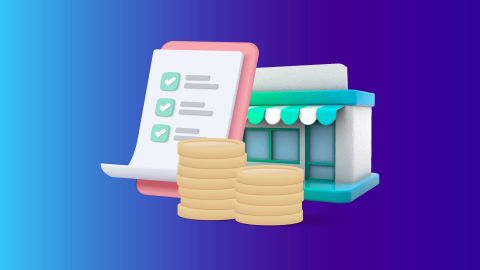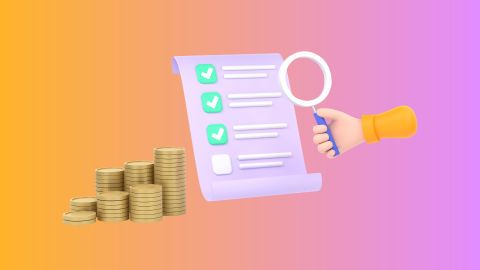Difference between an EIN and a FEIN
Term
|
Description
|
Business Tax ID Number
|
May also be called a Federal Employer Identification Number (FEIN)
|
EIN
|
Employer Identification Number
|
FEIN
|
Federal Employer Identification Number
|
Difference between EIN and FEIN
|
No difference; both refer to the same 9-digit tax number issued by the central government
|
What is a State Employer Identification Number?
Even if your business already has an EIN from the central government, you might also need to get a separate one from the state. Many businesses are required to have a State Employer Identification Number (State EIN) for each state where they pay taxes. In some cases, it can also help protect against identity theft, especially for sole proprietors.
Since tax rules can differ from one state to another, business owners should check the local rules to see if they need a State EIN and how to apply for it.
Employer Identification Number example
An EIN is formatted as XX-XXXXXXX. For instance, an example of an EIN might be 12-3456789. This number helps the IRS track the business's tax obligations and filings. It's unique to each business and once issued, it is never reissued or reused by the IRS, ensuring that each business's financial and tax history is distinctly maintained under this unique identifier.
Why is an EIN important for businesses and other entities?
- It is a platform where essential tax-related details can be accessed in one place
- It also helps in identifying assets under the Income Tax (IT) Act
- It is required by businesses involved in trade, manufacturing, sale, and export of goods and services
- Since all the information is in one place, intra and interstate transactions can be managed more efficiently
- It also helps the revenue department distinguish one business from others with similar names
Who is required to obtain an EIN from the IRS?
Entities that must obtain an EIN include:
- Incorporated entities under the Company Act, 2013.
- Partnership practices including Limited Liability Partnerships (LLPs).
- Sole proprietors who employ others.
- Trusts, involved in trading or business activities.
- Estates with operational business activities.
- Non-profit organizations and charitable trusts.
- Any business entity that registers for excise, alcohol, or tobacco operations.
Required documents to get Employer Identification Number (EIN)
- Proof of address
- Proof of identity
- PAN card of the proprietor
- Passport-sized photographs of the proprietor
- Address proof for the business you are applying for
- References
How to get an Employer Identification Number
In India, the equivalent of the Employer Identification Number (EIN) used in other countries is the Permanent Account Number (PAN) for individuals and businesses, and GSTIN (Goods and Services Tax Identification Number) for those involved in the supply of goods and services. Here is how to get each:
1. Permanent Account Number (PAN) for businesses
A PAN is mandatory for all businesses and is required for tax filings, opening bank accounts, and conducting various financial transactions.
Steps to obtain PAN:
- Online application:
- Visit the official website of the Income Tax department
- Fill out Form 49A (for Indian companies) or Form 49AA (for foreign companies)
- Submit the required documents, such as proof of business address, identity proof, and business registration certificate
- Pay the application fee online
- After successful submission, you will receive an acknowledgment receipt with a unique reference number
- The PAN card will be dispatched to the business address within 15-20 working days
- Offline application:
- Visit the nearest PAN facilitation centre or NSDL TIN-FC (Tax Information Network Facilitation Centre)
- Fill out Form 49A and submit the required documents (identity proof, address proof, business registration documents)
- Make the payment and you will receive the PAN card within 15-20 days
2. GSTIN (Goods and Services Tax Identification Number)
If your business is engaged in the supply of goods or services with a turnover exceeding Rs. 40 lakh (Rs. 20 lakh for service providers), you must apply for GSTIN. This number is needed for GST filings and for collecting GST on sales
Steps to obtain GSTIN:
- Online Registration:
- Visit the official GST portal (https://www.gst.gov.in)
- Click on the “Services” tab and select “New Registration”
- Choose your state, legal name, business type, and provide the PAN of your business
- Fill out the required details, including business address, type of business, and bank account details
- Submit documents such as proof of business address, bank details, identity proof of the business owner(s), and business constitution document
- Once the application is submitted, you will receive an ARN (Application Reference Number)
- After successful verification, you will receive your GSTIN within 3-7 working days
Documents required for GSTIN registration:
- PAN of the business
- Proof of business address (rent agreement or utility bills)
- Identity proof of the authorised signatory
- Bank account details (cancelled cheque or bank statement)
- Business registration certificate (like incorporation certificate, partnership deed, etc.)
Benefits of an Employer Identification Number
In India, the equivalent of an Employer Identification Number (EIN) is the Permanent Account Number (PAN) for businesses and Goods and Services Tax Identification Number (GSTIN) for those involved in the supply of goods and services. These numbers are unique to the businesses they are assigned to and do not expire. The same number is never reissued to another business, even if the original business is closed down.
The main advantage of obtaining a PAN or GSTIN is that it allows you to legally operate your business. You cannot run your business without one. You must apply for a PAN before you start your business operations. You also need a PAN for the following:
- Hiring and paying employees
- Opening bank accounts, obtaining credit, and investing surplus funds
- Maintaining limited liability protection
- Filing business taxes and registering for state taxes
Having a PAN and GSTIN also helps you keep your personal finances separate from your business. This ensures that your personal information is protected and shields you from identity theft.
Self-employed individuals, such as freelancers or subcontractors, do not require a PAN or GSTIN unless they meet specific thresholds for turnover or need to register for GST. However, it may still be a good idea for them to obtain one, as they must provide an identification number to those paying them for tax reporting purposes. A PAN can be used instead of other personal identification numbers to protect against identity theft.
Where Do I Find My EIN If It Is Lost?
If you once had a business identification number but cannot find it, you do not need to apply for a new one. Instead, try these methods:
- Look for any official notices or documents you received from the Income Tax Department when you applied for your PAN or GSTIN. These notices serve as confirmation that your business ID number was issued
- Contact the banks or financial institutions where you have used the number. If you used it to open a business account or apply for a loan, they should still have the number on file
- Reach out to any state or local authorities where you applied for business licensing. They should be able to assist in retrieving your lost PAN or GSTIN
- Locate the tax returns you have filed using your PAN or GSTIN. Your business tax ID number will be listed on these documents
- Call the Income Tax Department or the relevant state tax authority for assistance. They can help you search for your PAN or GSTIN if you provide the necessary identifying information and prove your authorisation to access the details
Closing your Employee Identification Number
Closing an EIN involves notifying the IRS to deactivate the business account linked to the EIN. This is typically done after the business has filed its final tax return and paid all owed taxes. The IRS requires a formal letter stating the reason for the closure, such as dissolution or the business ceasing operations, to finalize the process and prevent future tax liabilities.
Employee Identification Number vs. Taxpayer Identification Number (TIN)
Term
|
Description
|
Employer Identification Number (EIN)
|
Used by business entities for tax filing and reporting purposes.
|
Taxpayer Identification Number (TIN)
|
A broad term that includes all types of numbers used to identify taxpayers, such as SSNs and EINs.
|
Social Security Number (SSN)
|
A type of TIN issued to individuals for personal tax purposes.
|
EIN vs TIN
|
An EIN is a type of TIN used specifically by businesses. Both are used to ensure correct tax reporting.
|
Conclusion
An Employer Identification Number (EIN) is indispensable for businesses in the U.S., serving not only as a means to comply with IRS regulations but also as a tool for enhancing business credibility and operational capabilities. It facilitates a range of business activities, from opening bank accounts to applying for business loans and understanding the applicable business loan interest rate. Proper management and understanding of the EIN’s role and requirements can significantly contribute to the smooth functioning and growth of a business. Thus, securing an EIN is a critical step for any business starting its operations or expanding its reach in the marketplace.






